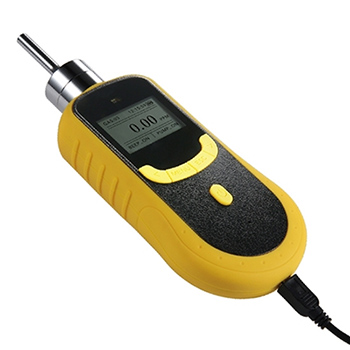What Should be Paid Attention to When Using a Toxic Gas Detector?
Toxic gas detector is an instrumentation tool for detecting the concentration of toxic gas leaks, mainly referring to portable or handheld gas detectors. Toxic gas sensors are mainly used to detect gas species present in the environment. Unlike the combustible gas detector, the toxic gas detector can be used universally. For example, carbon monoxide detector and CL2 gas detector are both called toxic gas detectors, but because the specific gases they measure are different, these two are completely different toxic gas detectors. If you take a carbon monoxide detector to detecting CL2 gas in the presence of HCL gas, the carbon monoxide detector does not respond.

That is to say, the carbon monoxide detector cannot detect CL2 gas, so it is necessary to clarify the specific toxic gas to be measured before selecting the type of the toxic gas detector. Toxic gas detectors can be pumped or diffused according to their toxicity. If the poisonous gas is very toxic, it will be dangerous for people to enter. In this case, a pump suction poisonous gas detector must be selected. If the toxicity of the poisonous gas is not very high, it is allowed to exist in trace amounts, but long-term inhalation will also cause danger. Yes, in this case, you can choose a diffusion type toxic gas detector, such as a place where carbon monoxide exists. So what should be paid attention to when using a toxic gas detector?
- Regular calibration and testing
The toxic and harmful gas detector, like other analysis and detection instruments, is measured by a relative comparison method. First, use a zero gas and a standard concentration of gas to calibrate the gas detector, and get a standard curve and store it in the instrument. During the measurement, the instrument compares the electrical signal generated by the gas concentration to be measured with the electrical signal of the standard concentration, and calculates the accurate gas concentration value. Therefore, zero-calibrating the instrument at any time and calibrating the instrument frequently are essential work to ensure the accuracy of the instrument's measurement. It should be noted that many gas detectors can replace the detection sensor at present, but this does not mean that a detector can be equipped with different detector probes at any time. Whenever a probe is replaced, in addition to a certain sensor activation time, the gas detector must be recalibrated. In addition, it is recommended to perform response detection on the standard gas used in the instrument before various instruments are used to ensure that the instrument really plays a protective role. -
Pay attention to the concentration measurement range of the detection instrument
All kinds of toxic and harmful gas detectors have their fixed detection range. It is only guaranteed if the measurement is completed within its measuring range. Verify that the gas detector is accurately measured. Measuring beyond the measurement range for a long time may cause permanent damage to the sensor. For example, if the LEL detector is accidentally used in an environment exceeding 100% LEL, it may completely burn the sensor. And toxic gas detectors will also cause damage if they are used for a long time at higher concentrations. Therefore, if the fixed gas detector sends out a limit signal during use, the measurement circuit should be closed immediately to ensure the safety of the sensor.

